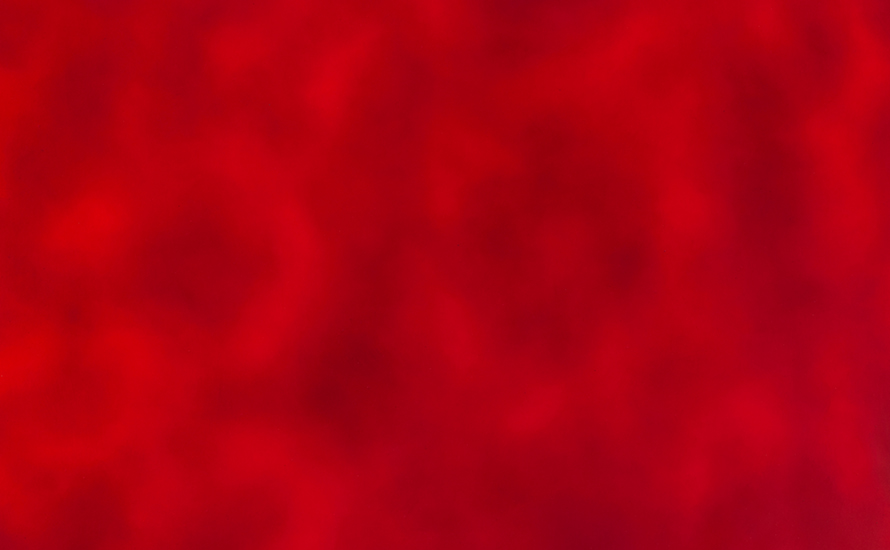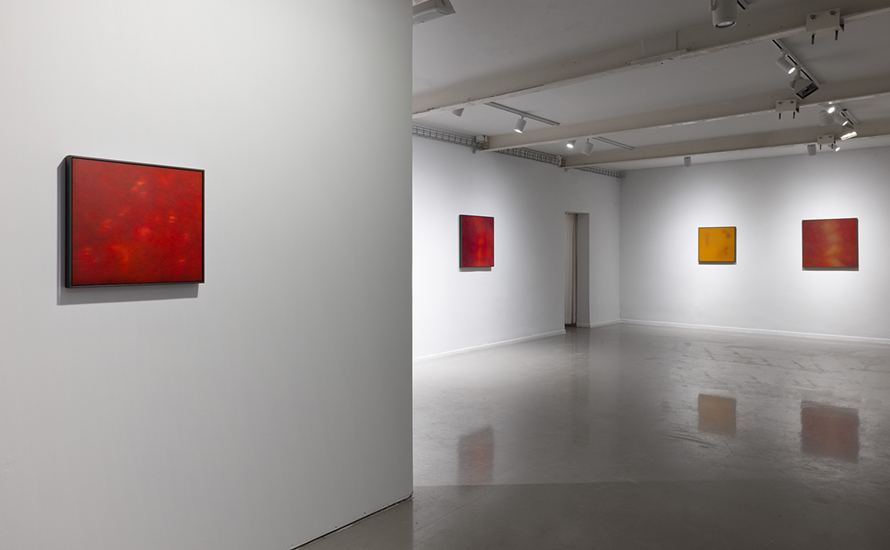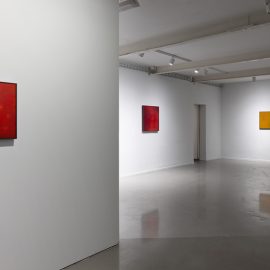The visual system is the primary mechanism by which we perceive the world. Through it we identify, spot movement, distinguish between colors, understand what is near and what is far. Light rays pass through the pupil and land on the retina, and its light sensors relay information through the optic nerve to the brain. It is a system that is accustomed to filling in details even when they are hidden. It deciphers, reconstructs, and fills in missing information. Our vision is perceptual: it constructs reality based on interpretation, not only on information coming from the outside.
Hadas Hassid chooses to close her eyes in order to open up another possible world. She examines how we close our eyes and see various shapes and colors. This phenomenon occurs already in childhood in that game whereby you press your eyes slightly in order to see stars—a game that teaches us about the latent possibilities of our visual system, about huge expanses that exist somewhere or nowhere, so accessible and close.
The flashes of light that we see with our eyes closed are known as phosphenes. These are caused by the fact that our visual system is perpetually active, so that even with our eyes closed and without an external light source it continues to process and produce visual signals. The receptors in the retina send signals to the brain, conjuring visual effects from an intraocular source, out of the darkness. Our brain tries to interpret these random messages and cast them into familiar patterns. Hassid devotes herself to the geometry of search and flickering, operating on the cusp between the external world and what our consciousness produces. And so, when Hassid closes her eyes, she practices a different kind of seeing. Her field of vision is surrounded by the appearances of shapes and colors—a personal and elusive inner vision. This experience, which is in continuous flux, she strives to translate into painting.
At first, she tried to capture the visions and describe them in words:
Up close, right in front of your eyes, a trapezoidal shape in red-orange fills most of the field.
Somehow it’s clear that what lies beyond it is dark.
Inside the orange there are gray blotches that spread and turn black.
But words weren’t enough. After all, the essence of language lies not within the words, but in what is in between them—even more so when one tries, through them, to grasp what is inherently ungraspable. In a bid to break through the limitations of language, Hassid seeks to realize the memory of her visual visions in material form.
At first glance, the exhibition appears to be different from the rest of Hassid’s oeuvre. In the past, she mostly engaged in drawing, especially of the conceptual kind. In her work “The Lifespan of a Green Marker“, for example, she presented a single line of light-green marker on paper—a kind of documentation of a minor and continuous movement, sustained until the marker dried up and the line faded. In another series of works, she presented drawings of traced pay slips and computer screens, representing raw emotion as rational, disciplined, and abstract images.
What does this minimalist and minor tendency have to do with the sprawling splashes of color in the present exhibition?
Underpinning the present action, much like her previous ones, is Hassid’s insistence on presenting a minimalist action founded on an internal logic, which requires enormous commitment and inordinate investment.
Hassid’s pictorial action is not only an expression of meaning, but the meaning itself, as well. It is at once a disappearance and an appearance of disappearance—an attempt to make the disappearance materialize. It is a conscious opting for predetermined failure to represent that which eludes representation—a failure that is not tragic, but poetic; a submission to randomness that gives rise to a new kind of order and of meaning. It is a meaning that stems from stubborn perseverance and a refusal to give up in the face of the impossible.
The decision to close one’s eyes and accept the authority of the splotches and flashes of color is not a surrender, but a submission. It is a concession of control, of the apparent certainty of the conventional outward-oriented vision in favor of a different way of seeing that is present of its own accord. It is an admission of the predetermined failure of the attempt to break free from the conscious and the known; an attempt that leads to roaming about an unfamiliar space, where the patterns of thought, vision, and perception that we unconsciously impose on the world are revealed in all their colorful starkness. Perhaps, after seeing the differences between them and ordinary visions, we may understand something about what normally escapes our gaze, eluding even our very ability to perceive.
This journey ventures far into the deep, dark realms of color, featuring bright flashes and colorful hazes. In this way, Hassid documents a state of submission of the self. Identity itself is nearly lost in the surrender to the images of endless landscape that appear behind the eyelids. She opens her eyes to the darkness from whence we have come and to which we will return, deliberately getting lost while being present. The willingness to dwell in uncertainty, in the dark, becomes the starting point of an inner source of light, a path of survival in the darkness that surrounds us on all sides.
























































































































































































